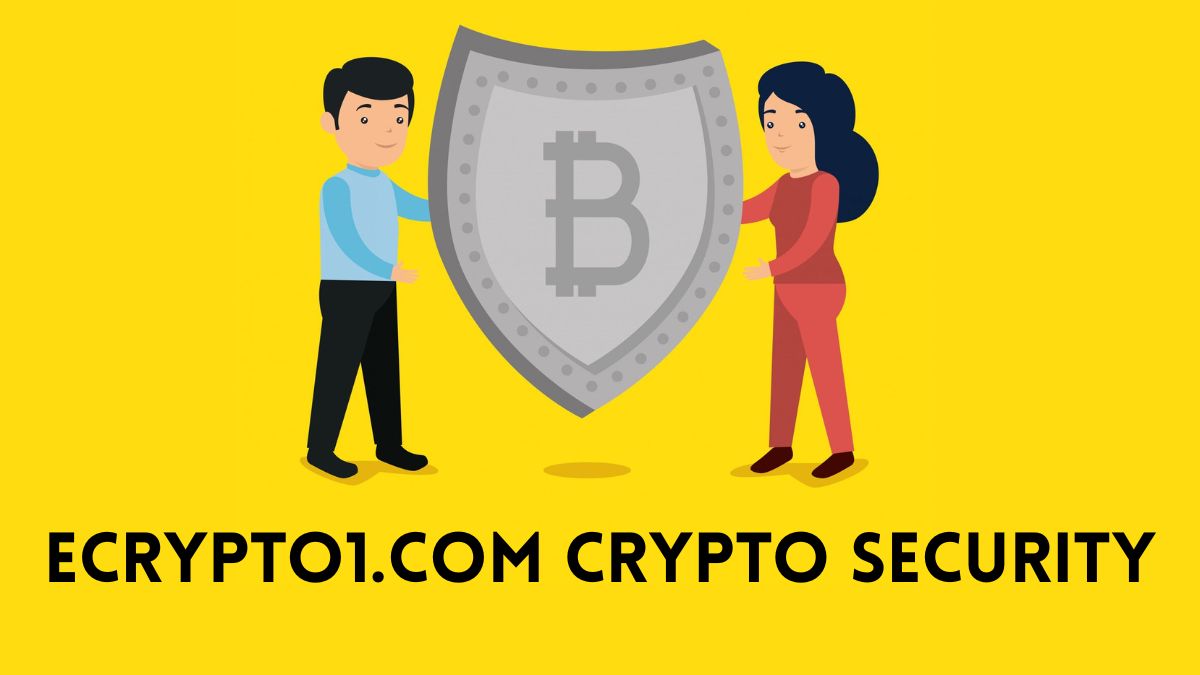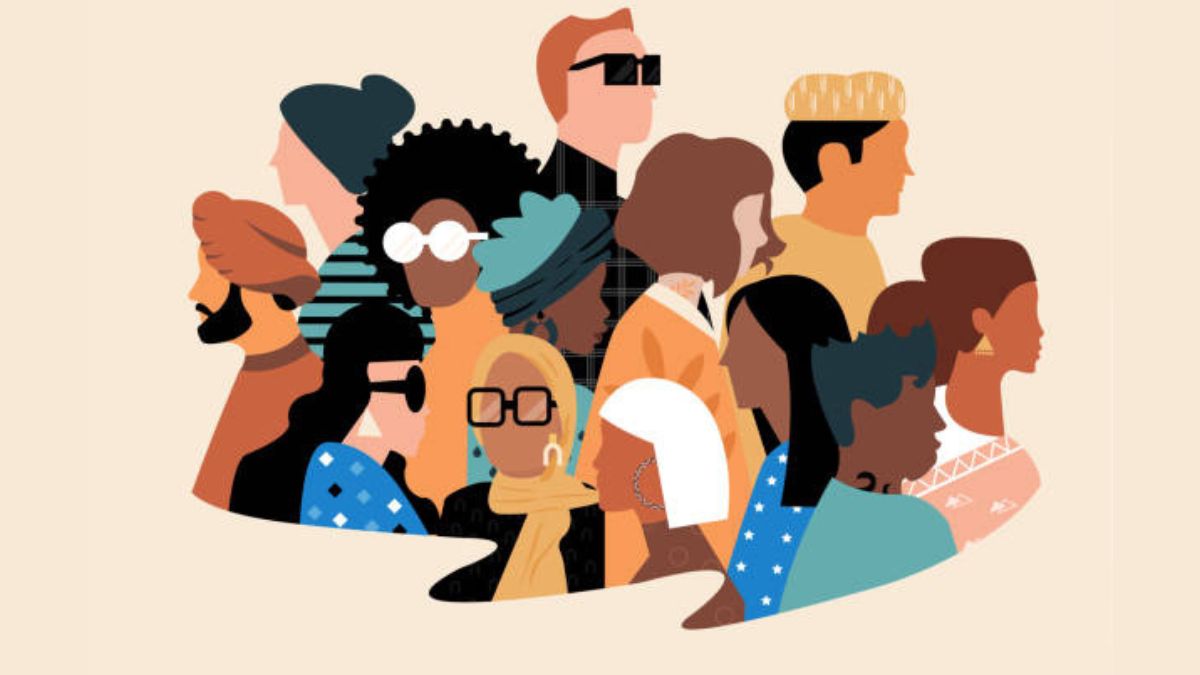Entertainment
Decoding Coomer Su: Its Impact on Memes and Online Communities

In the vast landscape of internet culture, few phenomena have sparked as much intrigue and debate as Coomer Su. This quirky term has evolved into a symbol that encapsulates a certain online persona, resonating deeply within various communities. As memes proliferate across social media platforms, the impact of Coomer Su continues to shape conversations around identity, behavior, and engagement in our digital age.
But what exactly is a “Coomer”? And how did this concept morph into a cultural touchstone? From humorous depictions to serious discussions about its implications, diving into the world of Coomer Culture offers fascinating insights into modern meme-making and community dynamics. Let’s unpack this phenomenon and explore its effects on both individuals and online spaces.
The Rise of Coomer Culture
Coomer Culture emerged as a reaction to the complexities of modern digital life. It reflects an amalgamation of memes, social commentary, and an understanding of certain online behaviors that have become prevalent in recent years.
At its core, Coomer represents individuals who often find themselves trapped in cycles of consumption—whether it be media, entertainment, or more adult content. This phenomenon captures a blend of humor and critique about overindulgence.
The rise was catalyzed by various meme formats showcasing exaggerated traits associated with this persona. Social media platforms became breeding grounds for these playful yet poignant representations.
As the term gained traction, it resonated with many users who found familiarity in its absurdity. Coomer Culture evolved into a lens through which people could navigate their experiences online while simultaneously poking fun at themselves and others within the community.
What is a Coomer?
A Coomer is a term that originated from internet culture, primarily on platforms like Reddit and 4chan. It describes an individual who has developed an unhealthy obsession with pornography or sexual gratification. This label often carries connotations of addiction and detachment from reality.
Coomers are typically portrayed as people who prioritize their urges over meaningful relationships or personal achievements. Their lives may become consumed by the pursuit of quick pleasure, leading to social isolation.
Visually, the Coomer meme features a character with distinct traits: wide eyes, disheveled hair, and a somewhat manic expression. This imagery highlights the often humorous yet troubling nature of the phenomenon.
In essence, being labeled a Coomer reflects more than just habits; it speaks to deeper societal issues regarding sexuality and mental health in our hyper-connected world.
How Coomer Culture is Reflected in Memes
Coomer culture thrives in the realm of memes, where humor and social commentary collide. These memes often depict exaggerated characters, embodying the essence of addiction to internet consumption and adult content. The Coomer figure has become a symbol of excess—representing countless hours spent scrolling through feeds.
Memes featuring the Coomer archetype illuminate aspects of modern life, addressing loneliness and digital obsession. They serve as both satire and self-reflection for individuals navigating online spaces.
The imagery is striking: wide-eyed faces paired with absurd captions evoke laughter yet prompt deeper thought about societal norms surrounding sexuality and technology.
Through sharable content, these visuals spread quickly across platforms, fostering community engagement. Users bond over shared experiences while critiquing their own habits within this hyper-connected world. This blend of irony and insight keeps coomer-related memes ever-relevant in today’s discourse on mental health and digital dependency.
The Impact of Coomer Su on Online Communities
Coomer Su has made a significant mark on online communities, transforming the way users interact and express themselves. This character embodies a blend of humor, self-deprecation, and critique of digital culture.
Within forums and social media platforms, Coomer Su serves as a rallying point for those grappling with addiction to technology or adult content. His image fosters discussions about modern masculinity and mental health issues in an increasingly digital landscape.
Memes featuring Coomer Su often oscillate between satire and sincerity. They provide both entertainment and insight into the struggles many face today. The comedic lens through which these challenges are viewed can offer comfort to those who relate.
As this phenomenon spreads across various platforms, it fosters connections among individuals facing similar experiences. These interactions create spaces where vulnerability is welcomed rather than shamed, reshaping community dynamics in unexpected ways.
Criticisms and Controversies Surrounding Coomer Culture
Coomer culture often finds itself at the center of heated debates. Critics argue that it promotes unhealthy behaviors, particularly related to addiction and sexual objectification. The portrayal of Coomers can perpetuate negative stereotypes about men, leading to a narrow understanding of masculinity.
Many believe this meme-driven identity fosters isolation rather than community. Instead of encouraging genuine connections, Coomer culture might reinforce loneliness among its followers.
The controversies don’t stop there; some see it as a reflection of wider societal issues like mental health struggles or the impact of technology on relationships. This makes discussions around Coomer Su quite complex and layered.
As with any online phenomenon, differing opinions abound. Supporters may view it as humorous catharsis while others see it as detrimental to real-life interactions and perceptions. Each side brings valid points to the table in this ongoing discourse about modern digital life.
Addressing the Issue: Can Coomer Su Be Controlled?
Controlling Coomer Su is a complex challenge. Many argue that the roots of this phenomenon lie in deeper societal issues, such as loneliness and addiction. Addressing these problems requires a multi-faceted approach.
Encouraging healthier online habits can play a key role. Communities can promote positive interactions and discourage excessive consumption of adult content. Moderation tools might help users set limits on their online activities.
Education is equally important. By increasing awareness about the implications of Coomer culture, individuals may better understand its impact on mental health and relationships.
Support networks are also crucial for those seeking change. Online forums and groups focusing on recovery can provide essential guidance and encouragement for individuals looking to break free from harmful patterns.
While complete control over Coomer Su may be elusive, fostering understanding and community support could lead to more constructive outcomes.
Conclusion
Coomer culture, with its distinct traits and characteristics, has woven itself into the fabric of online interactions. It serves as both a reflection of societal issues and a means for communities to express shared experiences. The memes that have evolved from this phenomenon often capture humor tinged with underlying truths about human behavior in the digital age.
As we delve deeper into the world of Coomer su, it’s clear that while there are criticisms regarding its influence on mental health and social dynamics, there’s also an undeniable sense of camaraderie among those who partake in this subculture. The conversations surrounding Coomer culture reveal much about our relationship with technology, intimacy, and self-perception.
Navigating through these complex layers can be challenging yet enlightening. Whether one embraces or critiques coomer-related content, it encourages discussions that extend beyond screens—about identity, connection, and understanding oneself in an increasingly fragmented world.
The future trajectory of Coomer su remains uncertain but undeniably intriguing. As communities continue to evolve around this concept, they may shape new pathways for engagement—or perhaps even redefine what it means to connect in today’s society.
Entertainment
Taylor Swift’s Producer Hints at New Album Release This Year

It’s the news that every Swiftie has been waiting for! Taylor Swift’s producer hints at new album release this year, dropping tantalizing clues about fresh music on the horizon. For fans who’ve been following every breadcrumb of her “Eras” tour and marveling at her record-breaking Midnights album, this is yet another reason to celebrate—and speculate.
Here you will find all the information you need to know about this possible new masterpiece. All the interviews, hints, and hushes from Taylor’s coworkers have been carefully examined. Everything you wanted to know about the possible next major chapter in Taylor’s story is right here.
What’s the Buzz Around the New Album?
It all began when Taylor’s long-time partner and producer dropped hints about a potential new project in a recent interview. A producer who preferred to remain anonymous called the project “magical” and “another evolution” of Taylor’s style, without revealing too much. The media and fans went into overdrive when she smiled playfully but seriously in response to a question about a release date; might her eleventh studio album be out in 2024?
Although Taylor has remained mum about her future plans, her history of surprising fans makes it clear that she is capable of a covert album release. Do you recall Folklore and Evermore?
Decoding the Hints
It would appear that this possible new album from Taylor is no exception to her penchant for dropping hints about her intentions into her messages. The most important hints that we have found are as follows:
1. Words from the Producer
Producer choice of words like “evolution” and “magical” suggests Taylor is exploring new sonic territory. Maybe we’re about to hear a new side of Taylor Swift—one that dabbles with funk, techno, or maybe something entirely different. Theorizing has already begun among the fans!
2. Social Media Teasers
You might have noticed that Taylor has been releasing lyrical snippets, cryptic emoticons, and photographs that reflect her professional movements if you’ve been following her on Twitter and Instagram. There are those who are quite perceptive and think these clues are leading up to a bombshell drop in the tale.
3. Tour Announcements Fueling Speculation
Fans are speculating if Taylor would reveal new songs live on her “Eras” tour, which has been extended. The fact that her concerts often include the release of her new album just adds to the magic of her shows.
4. A Collaborator’s Playlist
One of Taylor’s regular collaborators on Spotify posted a playlist of songs on rebirth, narrative, and personal development, all of which are important to Taylor’s philosophy. Could this playlist be an unofficial mood board for what’s next?
What Might This New Sound Look Like?
The key to Taylor Swift’s success has been her capacity to evolve into a new person with each album. Country (Fearless), pop (1989), indie-folk (Folklore), and synth-infused sounds (Midnights) are just a few of her musical styles. The new album will most certainly shock and delight listeners, if past performances are any indication.
According to popular speculation, her future album might take the following path:
- Going Global: Would Taylor, after working with global musicians like Lana Del Rey on Midnights and more recently, consider incorporating foreign influences into her music?
- Concept-Themed Tracks: Drawing inspiration from visual albums or even grand novels, Taylor may release another work that echoes Folklore and Evermore in its sense of unified storytelling.
- Experimenting with Electro Beats: After seeing the success of synthwave and disco-inspired sounds from singers like Dua Lipa and The Weeknd, Taylor may experiment with incorporating electronic music into her tale.
Why This Album Matters
When Taylor Swift announces the possibility of a new album, it is more than simply music—it is a cultural phenomenon. For the reasons given below, this document may hold great importance:
- Continuing Her Legacy: Taylor has been changing the face of music for a long time, and it’s not only because she breaks records; she also sets a standard for artists to be able to decide what happens to their stories. She continues to leave an indelible mark with each new record.
- Connecting with Fans: Swifties are well-aware that each album represents a stripped-down phase in Taylor’s life, which gives her music a very intimate quality. The release of a new album signifies a more profound immersion in her emotions, ideas, and life events.
- Expanding Her Range: With every record, Taylor cements her flexibility as an artist. Her versatility, inventiveness, and capacity to motivate others might be on full display in her new endeavor.
What Can Fans Expect Next?
Although there is a lack of information, here are some things that fans may do to be prepared:
- Follow the official channels of Taylor Swift: Any news, large or little, will likely come directly from her social media or website.
- Her co-writers and producers deserve your attention: They’ve been rather good at leaking information about her next projects.
- Being prepared for the unexpected is key in the “Eras” tour: When it comes to surprising people, Taylor is unrivaled. A brand-new song or teaser might be performed live!
Being a Swiftie is all about embracing the mystery, so make the most of the conjecture.
A Cultural Phenomenon in the Making
Taylor Swift’s producer hints at new album release this year, solidifying her place not just as a musician but as a global icon. Whether or not these hints translate into a 2024 album release, you can bet that Taylor will continue to make waves, inspire millions, and create meaningful art.
But for now, keep your headphones ready and your playlists open—because if Taylor Swift’s producer hints at new album release this year are anything to go by, we’re in for something truly “magical.”
Entertainment
Explore World Music at Interworld-Radio.net

Music has always had a way of bringing people together, regardless of their cultural or ethnic origin. For those who can’t get enough of different kinds of global music, Interworld-Radio.net is a fantastic starting point. From sharing new rhythms to building a global music community, this website appears to be a meeting point for music fans seeking alternative sounds.
What is Interworld-Radio.net?
The fundamental objective of the online platform Interworld-Radio.net is to bring people together from all over the globe by means of the exchange of musical compositions, spoken word, and other visual and auditory media. Whether they like contemporary experimental music, obscure records by marginalised artists, classic folk tunes, or any other type of music, our website invites a varied spectrum of music enthusiasts.
Users of Interworld-Radio.net aren’t limited to simply listening to regional hits or top singles like those on other platforms; they can also explore the cultural contexts and narratives behind the songs they hear.
Why Global Sounds Matter
More individuals than ever before have access to music from all across the world. Investigating ambient sounds is crucial, but why exactly?
1. Cultural Exploration
As a window into the experiences, perspectives, and customs of the numerous cultures that make up our global community, music from around the globe may be a great educational tool. The time has come to gather your belongings and go on an adventure.
2. Musical Diversity
Popular music often follows certain formulas. As we hear rhythms, melodies, and instruments from all around the world, our musical horizons expand.
3. Community Building
The power of music to unite individuals from different corners of the world is truly remarkable. This has broken down barriers of distance, language, and nation between musicians and their audiences.
One way Interworld-Radio.net takes use of these qualities is by playing music that promotes diversity and unity.
What Makes Interworld-Radio.net Unique?
There are a lot of websites out there that boast to offer the best music libraries and playlists. But, Interworld-Radio.net differentiates itself from the competition by offering more than just music streaming. This platform’s popularity among music lovers can be attributed to:
1. Curated Global Playlists
It could be a tough effort to find real worldwide noises while aimlessly skimming through recordings. The time-consuming process of searching may be eliminated with Interworld-Radio.net well curated playlists. Enjoy music from every corner of the globe with playlists arranged by continent, culture, or subject.
2. Spotlighting Independent Artists
Unlike commercial platforms, which sometimes prioritise well-funded artists and record labels, Interworld-Radio.net primarily focusses on independent performers. It provides under-represented musicians with a platform to showcase their music to a global audience. Here, listeners may find unsigned artists whose talents haven’t been sanitised by major labels.
3. Cultural Storytelling
Music and stories go hand in hand, and that is precisely what Interworld-Radio.net provides. Along with a plethora of recordings, listeners who are interested in delving further into a certain music scene or genre can discover artist interviews, brief cultural insights, and suggestions for relevant resources.
4. A Community for World Music Lovers
In addition to being a music platform, Interworld-Radio.net is also a community. Fans may connect with one another, suggest music, and even message artists directly through message boards. This unique location brings people together via music and cultural exchange.
5. User-Friendly Exploration
If you’re looking for a worldwide music platform, go no farther than Interworld-Radio.net, where we prioritise simplicity and ease of use. Its intuitive design, customisable filters, and silky smooth playing make it ideal for both seasoned and novice lovers of global music.
Exploring the Applications of Global Music
Global sounds have many practical applications beyond the realm of entertainment. People and businesses alike are discovering creative uses for global music with the help of Interworld-Radio.net:
- For Personal Enrichment
To broaden your perspective and increase your understanding of global cultures, immerse yourself in the music of lesser-known parts of the world.
- For Educators
Teaching students about different cultures through music from around the world has the potential to enrich their studies of language, geography, and history.
- For Brands
Marketers and corporations often use unique music as a strategy to establish their brand. Due to the distinctive and memorable tone they offer, global sounds could be useful for events, ads, or projects.
- For Creatives
Filmmakers, content creators, and visual artists often utilize sound as a storytelling technique. Thanks to Interworld-Radio.net, they may add music from all around the world to their narrative.
Building Bridges Through Music
You can’t discount music’s ability to bring people together. Sites like Interworld-Radio.net allow listeners to leave their local auditory echo chambers and enter a wider and more diverse audio cosmos.
If you like global music, whether it’s shamisen from Japan or Cuban rhythms, Interworld-Radio.net is a fantastic spot to start.
The Future of Global Music Platforms
Music that is both innovative and culturally important will never go out of style. In the future, music discovery, enjoyment, and consumption will likely be greatly affected by platforms like Interworld-Radio.net. They are reshaping global music culture by creating a friendly environment for artists and fans.
Since this is such an important cause, you should join us immediately. From curious newcomers to those who wish to rediscover ancestral music, Interworld-Radio.net has something special for everyone.
Become a Part of the Journey
To hear music from all across the globe, go to Interworld-Radio.net right now. If you want to broaden your horizons, connect with like-minded others, and gain a better understanding of the world, try listening to music.
Explore Interworld-Radio.net now to begin your musical adventure around the globe.
-

 Food & Drink3 months ago
Food & Drink3 months agoWhy Grouse Cheese Should Be Your Next Gourmet Obsession
-

 Crypto5 months ago
Crypto5 months agoeCrypto1.com Crypto Security Guide | Safe Trading Tips
-

 Technology3 months ago
Technology3 months agoThe Next Frontier: What Tech Giants Envision Future Beyond Smartphones
-

 Law5 months ago
Law5 months agoShocking Truth Behind the Ashcroft Capital Lawsuit Revealed
-

 Technology3 months ago
Technology3 months agoShaun Sampson IceXII: Revolutionizing the Future of Technology
-

 Topic3 months ago
Topic3 months agoArt, Culture, and Community: What Makes Allthefallenbooru Stand Out
-

 Crypto5 months ago
Crypto5 months agoICOSTAMP.com – Everything You Need to Know About ICOs
-

 Topic3 months ago
Topic3 months agoHow to Care for Your Shihuanuo: Tips and Best Practices
